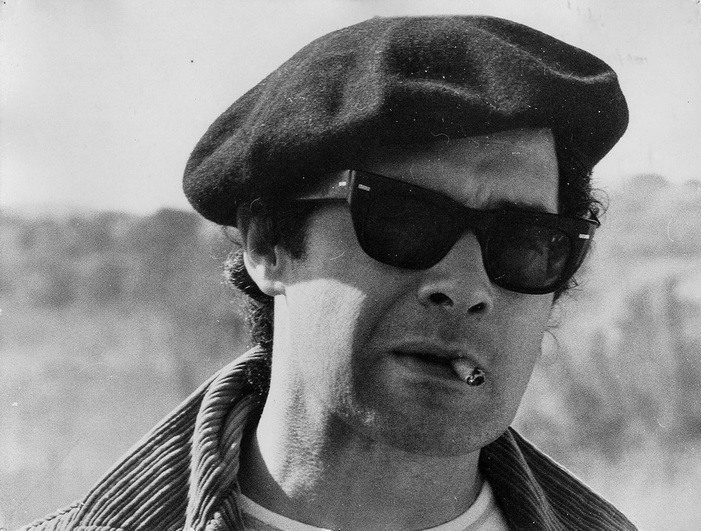Mozambique: ENI Open Day
Discovering Antonio Quadros with Tom Stennett – Fundação Leite Couto

Discovering Antonio Quadros with Tom Stennett – Fundação Leite Couto
This Tuesday, August 8th, the Fundação Leite Couto will host a debate with Tom Stennett, a post-doctoral researcher at the University of Exeter, United Kingdom.
At the event, Stennet will talk about the literary production of the painter and poet António Quadros, who signed texts under the pen names João Pedro Grabato Dias, Frey Ioannes Garabatus and Mutimati Barnabé João
"As an author, I don't have my own voice. I speak through borrowed voices. It's an artisanal process of investigating the dimensions of the already established dimension."
Tom Stennett is a Lecturer in Portuguese at St Anne's. His doctoral research focuses on António Quadros and His Alter Egos. He wrote 'Authorship in Mozambique: The Case of António Quadros (1933-1994)'.
Today, at 6:00 pm, at the Fernando Leite Couto Foundation, come and talk about the António Augusto Melo Lucena Quadros (1933–1994).
- Fundação Fernando Leite Couto
- Av. Kim Il Sung, 961, Maputo, Mozambique
About António Qaudros
António Augusto de Melo Lucena e Quadros was born on July 9, 1933, in Santiago de Besteiros, Tondela, into a family of landowners.
His childhood and a good part of his adolescence were spent in his native land, which he left to study painting. He attended the Lisbon School of Fine Arts, from where he transferred, in 1952, to the Porto School of Fine Arts. He graduated from this School in 1961 with a thesis entitled "Oil on Hessian Canvas", and was invited to teach there.
It was in Porto that, during the fifties, António Quadros gained fame as an innovative painter and a competent teacher. He exhibited at ESBAP, where he distributed "O Manifesto de Pintura" (1958), and studied Engraving and Fresco Painting at the School of Fine Arts in Paris, with the support of the Calouste Gulbenkian Foundation (1958/1959).
As a painter, he produced work influenced by European artists such as Marc Chagall (1887-1985) and Pablo Picasso (1881-1973) and by Mexican painters and Latin American surrealists. In this work there are references to the rural imaginary and to the pottery of Barcelos. Incidentally, it was Quadros who discovered the legendary potter from Minho, Rosa Ramalho (1888-1977).
He exhibited individually in Porto, Lisbon and Lourenço Marques and joined collective art exhibitions in Portugal (Lisbon, Porto and Viseu) and abroad, having participated, for example, in the I Bienal de Paris (1959), at the V and VII São Paulo Biennials in Brazil, and at exhibitions in Italy (Rome, Lugano and Genova), South Africa (Pretoria and Durban), Spain (Madrid and Barcelona) and in Paris
He is represented at the Calouste Gulbenkian Foundation, Lisbon, at the National Museum of Soares dos Reis, Porto, at the Museum of Pretoria, South Africa, and in private, Portuguese and international collections.
António Quadros achieved several distinctions, including the Critics' Prize at the 1st Paris Biennale (1969) and the Calouste Gulbenkian Foundation's Grand Prize, in 1958/1959.
In the 1960s, the artist settled in Mozambique, where he taught at the Technical School of Lourenço Marques and at the Eduardo Mondlane University, in Maputo, did theatre, designed architecture, travelled, wrote, and founded, with Rui Knopfli (1932-1997), a poetry collection entitled "Caliban" (1971-1972).
In this new phase of his life, he created three literary heteronyms: a contemporary poet, named João Pedro Grabato Dias, author of "40 e Tal Sonetos de Amor e Circunstância e Uma Canção Desesperada" (1970), "A Arca – Ode Didáctica na Primeira Pessoa. Tradução do Sânscrito Ptolomaico e Versão Contida do Autor" (1971), "Meditação", "21 Laurentinas e Dois Fabulírios Falhados" (1971), "Facto/Fado. Pequeno Tratado de Morfologia. Parte VII" (1985) and Sete Contos para um Carnaval" (1992); a 16th-century troubadour, Ioannes Garabatus, writer of satirical and anti-epic poetry, responsible for ""As Quybyrycas. Poemas éthyco em outavas, que corre sendo de Luís Vaaz de Camões em Suspeitíssima Atribuiçon" (1972); and, finally, a guerrilla fighter killed in combat, Mutimati Barnabé João, with whom the book of poems "Eu, O Povo" (1975) was found, a work transformed into a song by Zeca Afonso.
In the early 1980s, António Quadros returned to Portugal and resumed teaching at ESBAP and at the Pedagogical Unit of Viseu, as well as painting. He also dedicated himself to the production of ceramics and research in architecture.
However, the African continent continued to exert a great fascination over him and, before he died, Quadros returned to Africa to teach architecture at the Eduardo Mondlane University, in Mozambique, to participate in a handicraft program in Cape Verde and in an apiculture project in Guinea Bissau.
This unusual painter and writer, who also developed activities as an architect, urban planner, beekeeper, set designer and lyricist and took an interest in African ethnography and arts, making known the Mozambican painter Malangatana Valente Ngwenya (1936-), died in his house in Santiago of Besteiros on the 2nd of June 1994.
Sources: Fundação Fernando Leite Couto / Universidade do Porto


Leave a Reply
Be the First to Comment!
You must be logged in to post a comment.
You must be logged in to post a comment.